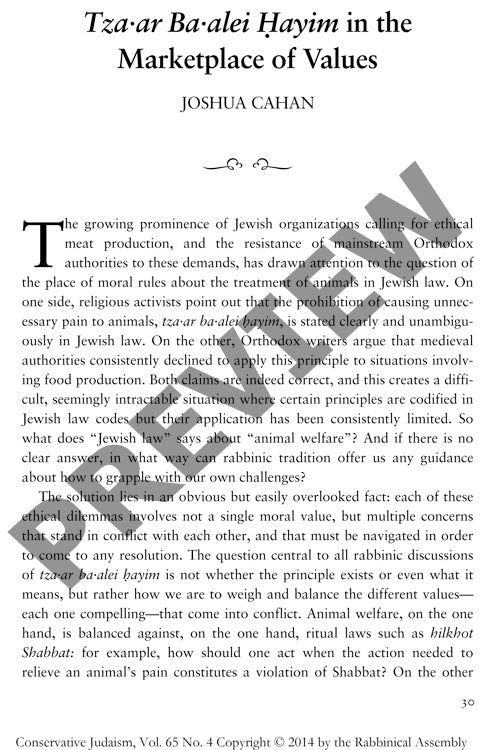Tzaar Baalei Hayim in the Marketplace of Values
Couldn't load pickup availability
Medieval Jewish authorities struggled to balance the biblical prohibition against animal cruelty (tza'ar ba'alei ḥayim) with pressing economic and ritual demands, creating precedents that still shape Orthodox responses to animal welfare advocacy today. Through analysis of Talmudic and medieval rabbinic sources, particularly from tractates Shabbat and Bava Metzia, a clear pattern emerges: while tza'ar ba'alei ḥayim was universally accepted as divinely mandated, its practical application consistently involved weighing competing values rather than absolute prohibition. Medieval authorities developed distinct approaches for ritual versus economic conflicts, generally allowing greater flexibility in ritual observance while subordinating animal welfare to economic necessity. As financial pressures mounted in medieval Europe, interpretations grew increasingly permissive of animal suffering when human needs were at stake. Authentic halakhic engagement requires not merely citing these medieval precedents, but emulating the rabbis' methodology of balancing competing values within contemporary contexts. Given modern Jews' improved economic circumstances and the availability of alternatives to animal exploitation, contemporary application of tza'ar ba'alei ḥayim demands a recalibrated balance that assigns greater weight to animal welfare concerns than was feasible in pre-modern eras.

More Information
-
Physical Description
-
Publication Information
Published 2014
ISBN
-
Publication Credits

